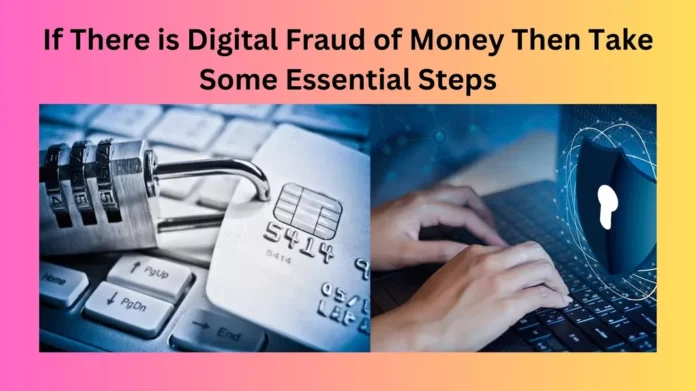In today’s digital age, where technology continues to advance at an unprecedented pace, the convenience of online transactions comes hand-in-hand with the lurking threat of digital fraud. Cybercriminals are becoming increasingly sophisticated in their tactics, making it crucial for individuals to take proactive steps to protect their hard-earned money. In this article, we will explore the various dimensions of digital fraud, shedding light on effective measures to safeguard your finances.
Understanding the Landscape of Digital Fraud
Digital fraud encompasses a wide range of malicious activities conducted online, including phishing, identity theft, and hacking. Cybercriminals are constantly devising new techniques to exploit vulnerabilities in online systems, putting your financial security at risk.
The Evolution of Cyber Threats
As technology evolves, so do the tactics employed by cybercriminals. From simple email scams to complex ransomware attacks, the landscape of digital fraud is dynamic and ever-changing. Staying informed about the latest threats is the first step in fortifying your defenses.
Recognizing Common Digital Fraud Schemes
To protect yourself from digital fraud, it’s essential to be able to identify common schemes employed by cybercriminals.
Phishing: A Deceptive Art
Phishing remains a prevalent method for fraudsters to gain access to sensitive information. These attacks often involve deceptive emails or websites that mimic legitimate platforms, tricking individuals into divulging confidential data.
Identity Theft: The Silent Threat
Identity theft is a silent predator, capable of causing extensive damage before its discovery. Cybercriminals can steal personal information to impersonate victims, wreaking havoc on their financial lives.
Hacking: Breaching Digital Fortresses
Sophisticated hacking techniques pose a significant threat, compromising the security of personal accounts and financial data. Understanding the vulnerabilities in your online presence is vital to prevent unauthorized access.
Proactive Steps to Mitigate Digital Fraud Risks
Arming yourself against digital fraud involves adopting proactive measures to minimize risks.
Strengthening Password Security
A robust password is your first line of defense against cyber threats. Create complex passwords, change them regularly, and use multi-factor authentication to add an extra layer of security.
Regularly Monitor Financial Statements
Regularly monitoring your bank and credit card statements is essential for detecting any unauthorized transactions promptly. The sooner you identify suspicious activity, the faster you can take corrective action.
Install and Update Security Software
Investing in reputable antivirus and anti-malware software is crucial for safeguarding your devices. Regularly update these programs to stay protected against the latest threats.
The Human Element in Digital Fraud Prevention
While technological solutions are vital, the human element plays a crucial role in preventing digital fraud.
Educating Yourself and Others
Knowledge is power. Stay informed about the latest fraud trends and educate your family and friends about the risks. Awareness is a powerful tool in the fight against digital fraud.
Exercise Caution in Online Interactions
Be cautious when sharing personal information online. Avoid clicking on suspicious links and be skeptical of unsolicited emails or messages. A healthy dose of skepticism can go a long way in preventing falling victim to scams.
Conclusion
In conclusion, the digital landscape is fraught with risks, but with vigilance and proactive measures, you can significantly reduce the chances of falling victim to digital fraud. By staying informed, adopting secure practices, and leveraging the latest security tools, you can safeguard your finances and navigate the online world with confidence.
Frequently Asked Questions (FAQs)
1. Q: How common is digital fraud, and who are the primary targets?
- A: Digital fraud is unfortunately widespread, affecting individuals, businesses, and even governments. Anyone with an online presence is a potential target.
2. Q: Can strong passwords really make a difference in preventing digital fraud?
- A: Absolutely. Strong passwords act as a formidable barrier against unauthorized access. Combine them with multi-factor authentication for enhanced security.
3. Q: What should I do if I suspect I’ve fallen victim to digital fraud?
- A: Contact your bank or financial institution immediately to report any suspicious activity. They will guide you through the necessary steps to mitigate the damage.
4. Q: Are there any red flags that can help me identify potential phishing attempts?
- A: Yes, common red flags include generic greetings, misspelled URLs, and requests for sensitive information. Always verify the legitimacy of emails or websites.
5. Q: How often should I update my security software to stay protected against digital threats?
- A: Regular updates are crucial. Cyber threats evolve, and updating your security software ensures you have the latest defenses against emerging risks.















